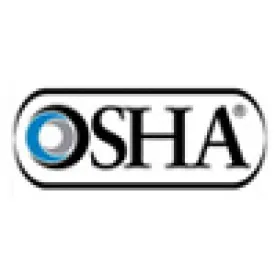In August 2016 we reported on the substantial increases to OSHA fines for violations of safety and health regulations as part of the Federal Civil Penalties Inflation Adjustment Act Improvements Act of 2015. (Sec. 701 of Public Law 114-74). This law allowed OSHA a one-time “catch-up” adjustment for civil penalties followed by annual increases in penalties based on the Consumer Price Index. The “annual inflation adjustment” is required to be published in the Federal Register no later than January 15th each year. On January 18, OSHA published the 2017 annual inflation adjustment for OSHA penalties.
Based on the Consumer Price Index for the stipulated time period, the 2017 annual adjustment for OSHA penalties is marginally over 1%. See Department of Labor Federal Civil Penalties Inflation Adjustment Act Annual Adjustments for 2017, 82 Federal Register 11 (January 18, 2017), pp. 5373-5387. The final rule became effective on January 13, 2017. As a result, increased penalties will apply to any penalty assessed after this date.
The 2017 maximum penalties are as follows:
-
Other-than-Serious: $12,675
-
Serious: $12,675
-
Repeat : $126,749
-
Willful: $126,749
OSHA published the following table in the Federal Register which should help to eliminate any guesswork regarding the level of penalties to be levied based on the date of the violations and when the penalty was assessed.
|
Violations occurring
|
Penalty assessed |
Which penalty level applies |
|
On or before November 2, 2015
|
On or before August 1, 2016 |
Pre-August 1, 2016 levels |
|
On or before November 2, 2015
|
After August 1, 2016 |
Pre-August 1, 2016 levels |
|
After November 2, 2015
|
After August 1, 2016 but on or before January 13, 2017
|
August 1, 2016 levels |
|
After November 2, 2015
|
After January 13, 2017 |
January 13, 2017 levels |
Additionally, in response to criticism by the North Carolina Department of Labor and the Kentucky Labor Departement OSHA clarified that it expects State Plans to increase their maximum penalty amounts to align with Federal OSHA. Specifically, OSHA stated
[A]ll State Plans must increase their maximum and minimum penalty levels to be at least as high as OSHA’s initial catch-up maximum and minimum penalty levels… and must thereafter increase these maximums and minimums based on inflation.
* * *
OSHA will assist the State Plans to make these necessary changes occur. OSHA’s position has been and continues to be that State Plans must have maximum and minimum penalties that are at least as effective as OSHA’s.
82 Fed.Reg. 11 at p. 5375-76.
The full text of the rule can be downloaded here.




 />i
/>i

